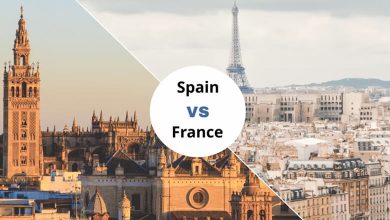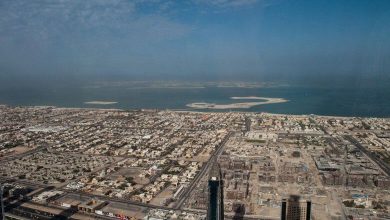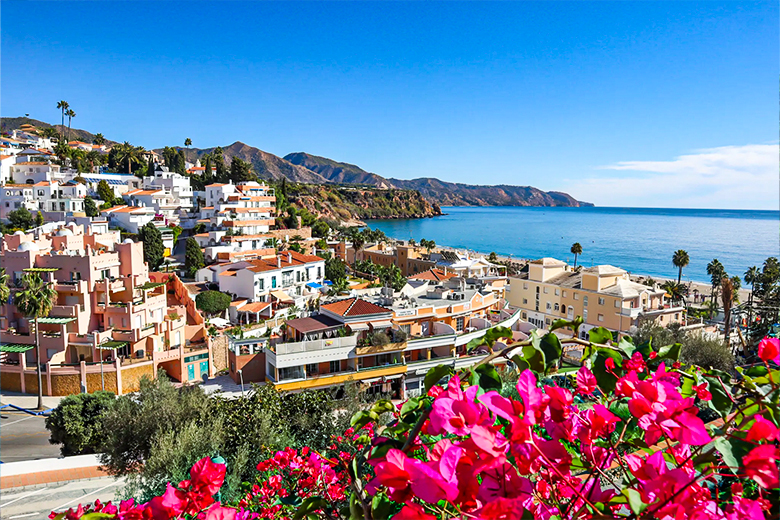
The dome above the crossing contains the pulley mechanism that oscillates the “Botafumeiro”, the famous burner found in this church. It was created in 1851 by goldsmith José Losada. The Santiago de Compostela Botafumeiro is the largest incense burner in the world, weighing 80 kg (180 lb) and standing 1.60 m (5.2 ft) tall. It was usually displayed in cathedral libraries, but on certain important religious festivals, it was tied to pulleys and filled with 40 kg (88 lb) of charcoal and incense.
There are no official limits to the area, But the Costa del Sol is commonly thought to stretch from the town of Concepcion in the west to the Nerja in the east, covering around 150 kilometers of coastline. The term Costa del Sol was coined by Rodolfo Lussnigg at the beginning of the 20th century to advertise the coastline of Almeria. It wasn’t until the late 1960s that it was used to refer to the entire Mediterranean coast of eastern Andalusia. The name refers to the sunny climate of the area which is available most of the year. The Costa del Sol is among the major tourist regions in Spain; approximately 35% of Andalusian tourism is concentrated in the region; with 17 million overnight stays in 2009.
For most of the 19th century, the area was a relatively prosperous center of commerce and industry. The region’s tourism boom began in the 1920s with the opening of Baños del Carmen[es] in Malaga and golf courses in Torremolinos. In the 1950s, it started to draw tourists from all over the world and is now particularly popular with British, German, Scandinavian and French tourists. The most populous city on the Costa del Sol is Malaga, with a population of nearly one million. Malaga is home to Malaga del Sol Airport, third-busiest airport on Spain’s mainland, after Barajas (Madrid) and El Prat (Barcelona).

Geography of Costa del Sol
Chats à Die Costa del Sol, Torremolinos, Benalmadena, Marbella, Fuengirola, Estepona, Mijas, Rincón de la Victoria, San Pedro de Alcántara, Manilva, Casares, Vélez-Malaga, Nerja, Torrox and Frigiliana.
From the Maro cliffs in the east to Punta Chullera in the west, this coastline extends. It is located in a small coastal region that is bordered to the north and south by the Mediterranean Sea and a few of the Penibetic Mountains, including the Sierra de Mijas, Sierra Bermeja, Sierra Blanca, Sierra Crestallina, Sierra Alpujata, and Montes de Málaga. The coast presents a variety of landscapes: beaches, cliffs, estuaries, bays and dunes. The rivers are short and seasonal, while agriculture is hampered by the downwind effect created by the Betic system.
History of Costa del Sol
Prehistory
The history of settlement on this coast spans approximately 2,800 years. The first settlers were probably the Bastuli, an ancient Iberian Celtic tribe. Around 770 BC, the Phoenicians established their colony of Malacca here, and from the 6th century BC, it was undergoing the hegemony of ancients Carthage in North Africa From 218 BC. AD, the region was ruled by the Roman Republic and then united with the Roman Empire at the end of the 1st century.
Under the Roman Republic, the Municipium Malacitanum became a transit point on the Via Herculea, reviving the city economically and culturally by connecting it to other developed enclaves in the Spanish interior and to other Mediterranean ports.
start of tourism
After being a relatively prosperous commercial and industrial center for most of the 19th century, the province suffered a severe economic decline in the 1880s and 1890s. This led to the end of the steel industry in 1893 and weakened trade and textiles. The agricultural sector suffered a severe depression, affecting the breeding and cultivation of all major crops, in particular grapes (Vitis vinifera), a variety used in the wine industry, which was devastated by an epidemic of phylloxera.
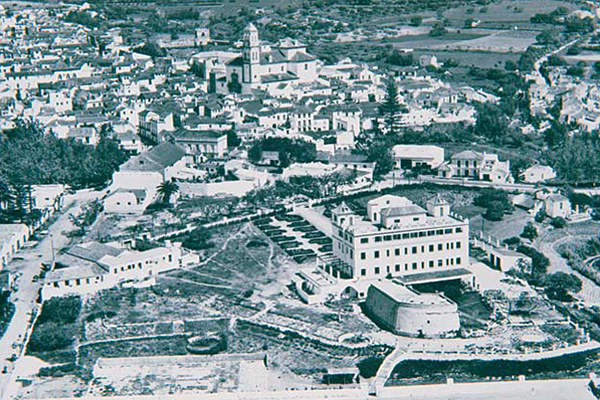
Spanish Civil War
After Franco’s troops revolted in July 1936, control of Andalusia was divided between the Republican Army and the Nationalist Party, with the Costa del Sol remaining in the Republic and The Spanish Republican Navy’s base of operations is Malaga. Under the direction of General Quipo de Jano, combined Nationalist and Italian forces began an offensive in February 1937 to seize Republican control of the province of Málaga. This effort culminated in the Battle of Málaga.
1940s and 1950s
Before World War II, Marbella was a city of jasmine with only 900 inhabitants. Ricardo Soriano, Marquis of Ivanre, settles in Marbella and becomes widely known among his rich and famous friends. In 1943 he acquired an estate called El Rodeo between Marbella and San Pedro, where he later built a resort called Venta y Albergues El Rodeo and began the development of tourism in Marbella.
1960s and 1970s
With a tourist boom between 1959 and 1974, the Costa del Sol experienced explosive demographic and economic growth. Costa del Sol was a trademark that was made especially for this name to promote the Mediterranean coastline of the province of Malaga to foreign holidaymakers. Bring to market. Historically, the population of the province lived in fishing villages and “white” villages (pueblos blancos), located in the mountainous interior that extends to the coast. The region was developed in the 1950s to meet the demands of international tourism and has since been a well-liked vacation spot for foreigners, both for its beaches and for its indigenous culture.
From the late Seventies onwards
The reconstruction of Malaga airport has been a decisive improvement in infrastructure, favoring mass tourism in the coastal area.
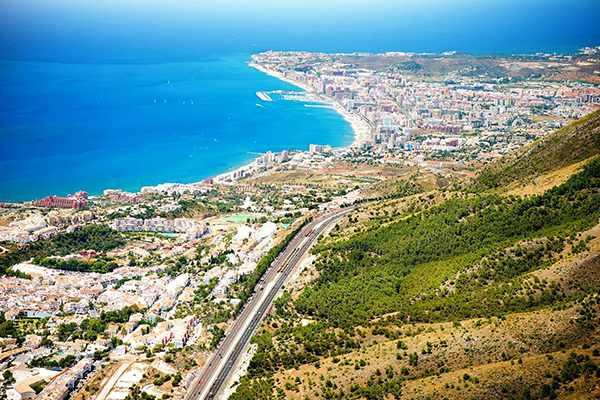
Cheap charter flights and vacation packages have given it a place in the international market. In the 1970s, travel to Spain was the main activity of European tour operators, and the Costa del Sol continued to grow in popularity throughout the decade. This trend coincided with Malaga’s rapid industrial growth and reduced dependence on the agricultural sector, although Spain’s overall economic growth slowed to near stagnation after 1973.
Passenger of Costa del Sol
Cruise ships have become an important industry for the filter and a major driver of enterprise in Malaga. In 2012, 651,517 passengers visited the city on cruise ships that called at the port, including those who started or ended their journeys in Malaga. [43] The cruise industry has continued to grow, with plans to include a new passenger terminal, port museum and environmental education center among the ship’s facilities at Pier 2. The commercial terminal will also operate from Pier 1, which can accommodate 24 superyachts up to 30 meters in length, and the East Wharf passenger terminal will be renovated to improve pedestrian access and double its current capacity to 560,000 passengers per year.
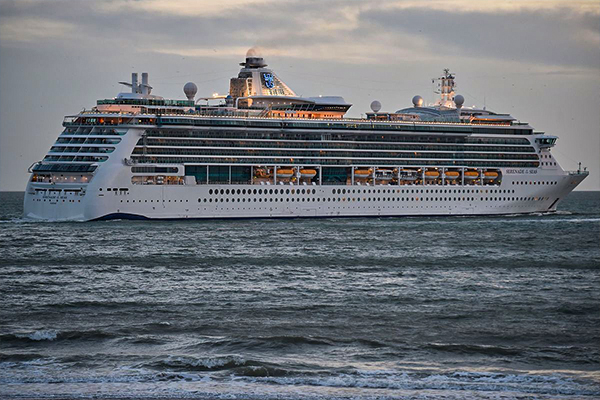
Gastronomy of Costa del Sol
The four departments of Marbella are mainly used for leisure purposes; although both Puerto Banus and Puerto de la Baia Diria are allowed to call, neither offers regular services to other ports. The port of Bajadilla is also the headquarters of the Association of Fishermen of Marbella for the transport of goods.
Tortillas are a typical Spanish omelette made with potatoes and served cold, a plate of thinly sliced serrano ham or cured ham and a glass of sherry or Malaga wine is a traditional combination. Ir de Tapas (Spanish Tapas Tour) is a Spanish expression that means going around the bars for a drink or a snack. It is an important social activity for Spaniards. Some bars offer free snacks when you order drinks. A typical breakfast dish, churros are fried pastries served hot with café con leche or hot chocolate.
The Top Attractions in Costa del Sol
- Alcazaba
- Marbella Old Town
- Cueva de Nerja
- Puerto Marina Benalmadena
- Malaga Cathedral
- Bioparc
- New Bridge
- Parque De La Paloma
- Museo Picasso Malaga
- La Carihuela
- Castillo de Gibralfaro
- Museo Automovilistico & de la Moda
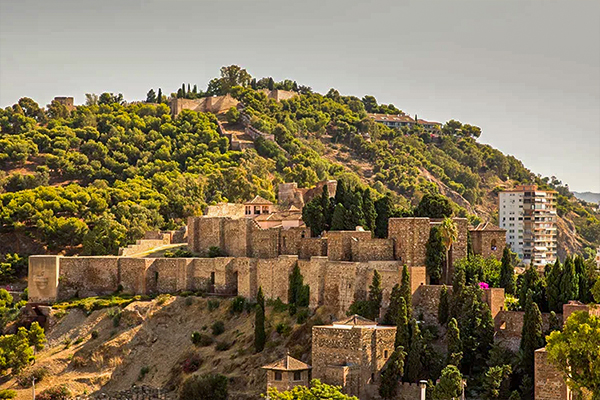
Guide Costa del Sol
One of Europe’s leading holiday destinations, the Costa del Sol has everything a top tourist destination needs to attract visitors year after year. Its mild climate offers the opportunity to visit at any time of the year. and is milder than almost anywhere on the African continent. other options.
- More than 300 days of sunshine every year
- Geographically considered one of the best-connected areas by air and road.
- There are over 70 golf courses in the region. A wide range of other leisure activities are available consists water sports, boating, hiking, biking, horse riding, spa and steam room facilities and more…
- 180 kilometres of sandy beaches stretch along the Mediterranean coast
- The Costa del Sol makes an excellent base for visiting other parts of the country and for day trips and weekend sightseeing in other parts of the country.
- Some of the best malls in Spain
- Food and beverage options are unrivalled in the area
- Nightlife and dining abound
- A wide variety of international schools and higher education centres.
- A wide variety of international schools and higher education centres.
- Safe environment and very family culture.
- Stable Internet network infrastructure to be able to do business with the outside world.

Popular places on the Costa del Sol:
Mijas Costa
The Pueblo de Mijas is the jewel of the Costa del Sol, it is a beautiful town located in the hills behind Fuengirola at an altitude of 400 meters, so it offers wonderful views of the coast about 10 kilometres to the south. The town has managed to retain much of its laid-back Andalusian traditional way of life, with locals enthusiastic for all things festive. Mijas Costa is a 12-kilometre stretch of modern tourism-oriented developments, including the popular La Cala de Mijas and Sitio de Calahonda. The two large residential urbanizations are located on the coastline in the municipality of Mijas.
Marbella
Known for its charm, the seaside resort has always been popular with the rich and famous, as well as foreign residents are drawn to its lifestyle. Dating back to Roman times, Marbella is southern Spain’s answer to Saint-Tropez. The historic district’s cobblestone streets and squares is full of lovely boutiques, but for fashion shopping, Puerto Banus has all the best designer stores and the place comes alive at night with huge yachts in the background. Get up and have fun for all tastes. Marbella’s food scene is second to none, with beachfront ‘chiringuito’ eateries and Michelin-starred eateries.
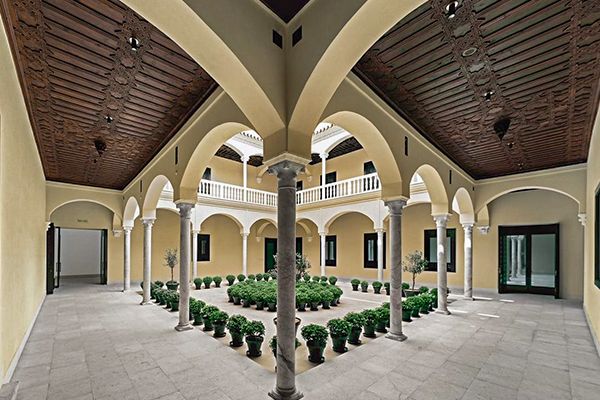
Estepona
Estepona, one of the few seaside towns that has maintained its beauty and pueblo character, has a population of about 70,000. All of the tourist-related infrastructure, including hotels, dining establishments, amusement parks, and retail establishments, are present. Many street cafes and tapas bars still serve traditional Spanish cuisine. In the “old town,” the steep and narrow streets are pedestrianized and decorated with flowerpots of different colours. It is a pleasure to walk there. In Estepona, you will find bars and small shops where you least expect it, all very welcoming and friendly.
Benahavis
Once an Arab fort atop the highest hill in the region, complete with the ruins of an 11th-century castle, the area is also synonymous with food, attracting visitors with its many upscale restaurants. An area populated by a large number of ex-pats who find their surroundings so picturesque that they simply cannot resist spending time there. Yet it remains untouched, with winding narrow streets, scenic mountains and natural streams.
Casares
A postcard town with a population of just 3,000, the scenery along the way is worth photographing. To say Casares is magnificent is an understatement. The town of Casares has something very special about it, which means you can just park your car and focus on taking photos. Another sugar cube, in a precarious heap, crashed against the ramparts of the Arab castle. It’s hard to believe that this charming place is only about ten kilometres from the coast, and still seems to manage to avoid the tourist bus lines.
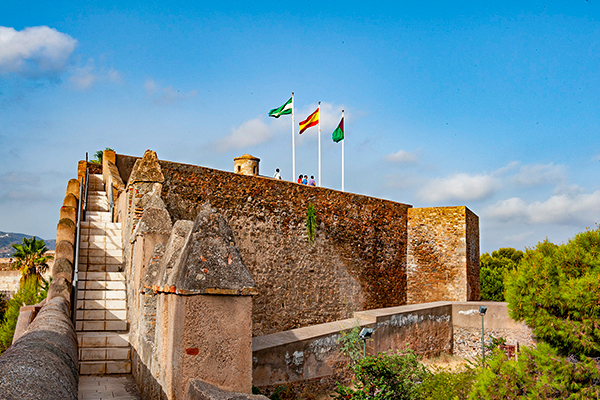
Manilva
Manilva is made up of some communities. The white town of Manilva itself is a few miles inland from the coastal fishing village of San Luis de Sabinillas. Then to the west, there is a quiet marina called Puerto de la Duquesa and its surrounding residential area and golf course, as well as various residential developments, down to Punta Chullera. The city covers 35 square kilometres and has about 17,000 full-time residents, with another 14,000 living temporarily in vacation homes. The main economy is based on agriculture, fishing and more recently tourism.
Sotogrande
Sotogrande is located at the western end of the Costa del Sol, in the town of San Roque in Cadiz. One of the most luxurious sports and residential complexes in Europe. Its 2,500 hectares include a renowned international school and numerous recreational activities: sailing and boat schools, kayaking, diving and kitesurfing, local health clubs and 7 of the most famous golf courses on the Costa del Sol. Other activities include hunting and clay shooting, cycling and mountain biking, and a nature reserve for hiking and nature walks. The pleasure quay has many excellent restaurants, trendy cafes and good bars, creating a relaxed atmosphere.
The Best beaches in costa del sol
- Burriana Beach
- Cabopino Beach
- Playa de La Malagueta
- Playa La Carihuela
- Playa El Bajondillo
- Playa de la Cala Mijas
- Playa de la Cala el Cañuelo
- Carvajal Beach
- Playa Arroyo de La Miel
- Playa de Fuengirola
The Top 10 Best Hotels in Costa del Sol:
- Vincci Larios Diez
- ICON Malabar
- Only YOU Hotel Málaga
- Soho Boutique Equitativa
- Hotel Brö-Adults Only
- Palacio Solecio, a Small Luxury Hotel in the World
- Madeinterranea Suites
- Gran Hotel Miramar GL
- Room Mate Valeria
- MB Boutique Hotel – Adults Recommended


